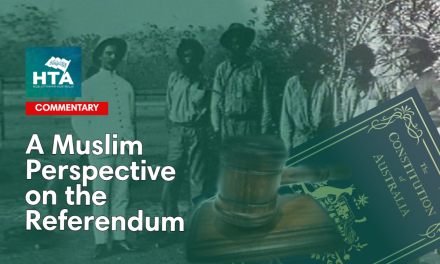The 1967 “six-day-war” is often considered to have demonstrated the Jewish entity’s (“Israel”) military strength over Arab forces. “Israel” single-handedly and decisively defeated three neighbouring Arab powers – Egypt, Syria and Jordan – within a span of just six days. However, a closer look at the events that occurred before and during the war demonstrates that “Israel” did not necessarily win the war due to military superiority. As shown in the table below, the “Israelis” were not even close to matching the military strength of the Muslims.
Table 1: Comparison of “Israeli” and Arab military strength in 1967
| IDF | Arabs | |
| Armoured brigades | 10 | 15 |
| Paratroop brigades | 9 | 53 |
| Tanks | 1300 | 2500 |
| Artillery pieces | 746 | 2780 |
| Fighter jets | 247 | 557 |
| Ground-to-air batteries | 5 | 26 |
Ahron Bregman provides the above comparison in his book Israel’s Wars and says, “the Arab armies had clear superiority both in human and material resources.” Therefore, we need to look at what went wrong on the Arab side that led to their defeat – in six short days – despite having clear military advantage.
Nasser’s false show of strength
In the build-up to the war a lot of anti-“Israeli” rhetoric came out of Egyptian President Gamal Abdel Nasser’s tongue. However, it was all mere political posturing devoid of any real intention to fight the Jewish entity. According to the then-Chief of Staff, General Fawzi, “Abdel Nasser did not want a war with Israel. Abdel Nasser was thinking of his image in the Arab world. So he put on a show of strength using the armed forces…”
The following points testify to the veracity of General Fawzi’s words:
- Although Nasser made it seem like an Egyptian strike on the Jewish entity was imminent, all his troops near the Sinai border were positioned in a defensive manner.
- His order to the UN troops that were deployed along the Egyptian border after the Suez crisis to withdraw from their posts was only partial. He did not order the withdrawal of the UN troops from either Gaza or Sharm el Sheikh, the harbour that controls passage through the Straits of Tiran, which is of vital national interest to “Israel”. However all the UN troops had to leave because the UN Secretary General at the time, U Thant, wanted that either all the troops should stay or they should leave all together.
- Although Nasser announced the closure of the Straits of Tiran soon after the UN troops left, which served as “Israel’s” casus belli for attacking Egypt, the Straits were never really physically blocked, before or during the war. Ahron Bregman states regarding Nasser’s blockade of the Straits, “It is a puzzling but little-known fact that Egyptian troops never blocked the Straits, which remained open before and throughout the crisis.”
- Nasser did not want to attack “Israel” first but rather wanted to wait for them to attack first despite knowing very well that it would be fatal for Egyptian forces and would give “Israel” a clear advantage. On hearing Nasser’s decision to wait for an “Israeli” first strike the commander of the Egyptian air force, General Sudki Mahmoud, protested that it “will be crippling…It will cripple the armed forces.”
- On 5 June 1967 the Jewish entity launched a successful air strike against the Egyptian air force in the Sinai. The Egyptian pilots were caught off guard and the attack destroyed 298 planes, most of which were on the ground. However, the ease with which “Israel” crushed the Egyptian air force in its very first strike was only possible because the radar system in Egypt was shut down when the attack took place. Right at the time when the “Israeli” air strike began, co-incidentally or otherwise, Marshal Amer and the War Minister Shams el-Din Badran, accompanied by the entire command of the Egyptian armed forces, were also in an aeroplane on their way to the Sinai to inspect the Egyptian units and the radar system had to be shut down to prevent their plane being shot down by mistake. This reckless act by the Egyptian authorities was more than mere incompetence because they were very well aware that an “Israeli” attack was imminent and were expecting the “Israeli’s” to attack first any moment, as mentioned earlier.
- With the air force crippled, the Egyptian forces in the Sinai eventually had to retreat. However, the Egyptian authorities made their troops retreat in a very haphazard and disorganised manner which further added to their loss. Ahron Bregman says about the manner of the Egyptian retreat, “A skilfully conducted step-by-step withdrawal could have saved lives, or at least proved less costly, but in the event the retreat was very disorderly…The end result was disastrous – for while 2,000 Egyptian troops were killed fighting the Israelis, 10,000 perished in the retreat.”
Jordan & Syria
Regarding Jordan, we must remember that the ruling dynasty was put in place by the British after the First World War. Jordan did not put up any serious fight against “Israel” in the 1948 war, as it seems they could not move against “Israel” without the approval of Britain. This was demonstrated in the 1948 war when King Abdullah’s intention was to capture the West Bank only. Upon hearing this, the British Foreign Minister Bevin told the King’s Prime Minister, “It seems the obvious thing to do. But don’t go and invade the areas allotted to the Jews.”
King Hussein was no different to his grandfather King Abdullah and the liberation of Palestine was never on his agenda. Rather, the real cause that led him to join the war against “Israel” in 1967 can be described by the words of Walt Rostow, the Special Assistant to the then-US President Lyndon Johnson. Rostow writes in a memorandum to President Johnson on 15 Nov 1966 complaining against an “Israeli” attack on Jordan:
“They’ve wrecked a good system of tacit cooperation between Hussein and the Israelis. We had his tacit agreement to keep his armor off the west bank of the Jordan, and he had made an honest effort to round up terrorists in Jordan. Continuing this kind of cooperation will be all but impossible now…They’ve undercut Hussein. We’ve spent $500 million to shore him up as a stabilizing factor on Israel’s longest border and vis-a-vis Syria and Iraq. Israel’s attack increases the pressure on him to counter attack not only from the more radical Arab governments and from the Palestinians in Jordan but also from the Army, which is his main source of support and may now press for a chance to recoup its Sunday losses.”
As for the Syrians, they declared defeat even before the combat started. An article published in Time magazine on 1 September 1967 reports:
“… just as Israel gathered its armor to scale the Golan Heights, Syria prudently announced that it had agreed to the U.N. ceasefire.”
The same article mentions further:
“Ironically, the Syrians themselves hastened the Israeli victory. In an effort to pressure the United Nations into enforcing a ceasefire, Damascus Radio undercut its own army by broadcasting the fall of the city of El Quneitra three hours before it actually capitulated. That premature report of the surrender of their headquarters destroyed the morale of the Syrian troops left in the Golan area. Within only 27 hours, at a cost of 115 killed and 322 wounded, v. 1,000 Syrian dead, countless wounded and 600 captured, the Israelis were masters of Golan Heights.”
How 1967 shaped debates about Palestine
“Israeli” minister Yigal Allon wrote on the eve of the 1967 attack: “In … a new war, we must avoid the historic mistake of the War of Independence [1948] … and must not cease fighting until we achieve total victory, the territorial fulfillment of the Land of Israel” (emphasis added).
By the end of the war, “Israeli” troops were less than 50 km from Amman, 60 km from Damascus and 110 km from Cairo. “Israel” had seized the West Bank, East Jerusalem, Gaza Strip, the Golan Heights, and the Sinai Peninsula, which provided “Israeli” cities with a buffer zone against attacks from neighbouring countries.
Since then, subsequent engagements between “Israel” and the Muslim world – whether in the military form, such as the 1973 war, or in the form of “peace talks” – have been around how much of the land seized by “Israel” during the war should it give up. For example, Muslim leaders now openly call for the two-state solution creating a Palestinian state based on pre-1967 borders. Such debates only serve to normalise and make invisible the initial wrong of planting “Israel” in the heart of the Muslim world through violence and mass expulsion of Palestinians from their homes.
A history of betrayals
Palestine was betrayed not just in the 1967-war, but also in the prior 1958-war, ostensibly fought to liberate Palestine, and the 1973 Yom Kippur war, which only paved the way for then Egyptian President Anwar el-Sadat to make peace with “Israel”. Therefore, ignoring the rhetoric and judging by actions, liberation of Palestine does not seem to have been on the agenda of Muslim rulers.
Likewise, today we cannot be complacent about the empty rhetoric of Muslim leaders as they react to Trump’s recognition of Jerusalem as “Israel’s” capital. There is hardly anything of substance that these Muslim rulers have done for Palestine. In fact, in the recent OIC summit in Turkey held in response to Trump’s declaration of Jerusalem as “Israel’s” capital, OIC members have renewed their support for the establishment of a Palestinian state “on the borders of 4 June 1967” and reaffirmed their “attachment to the just and comprehensive-peace based on the two-state solution”.
Quite clearly, then, the OIC continues to legitimise the existence of “Israel” as an occupying force in the heart of the Muslim world. Therefore, any “action” the OIC takes can only be superficial that does not properly address the root cause of the suffering of the Palestinians.
![]()















